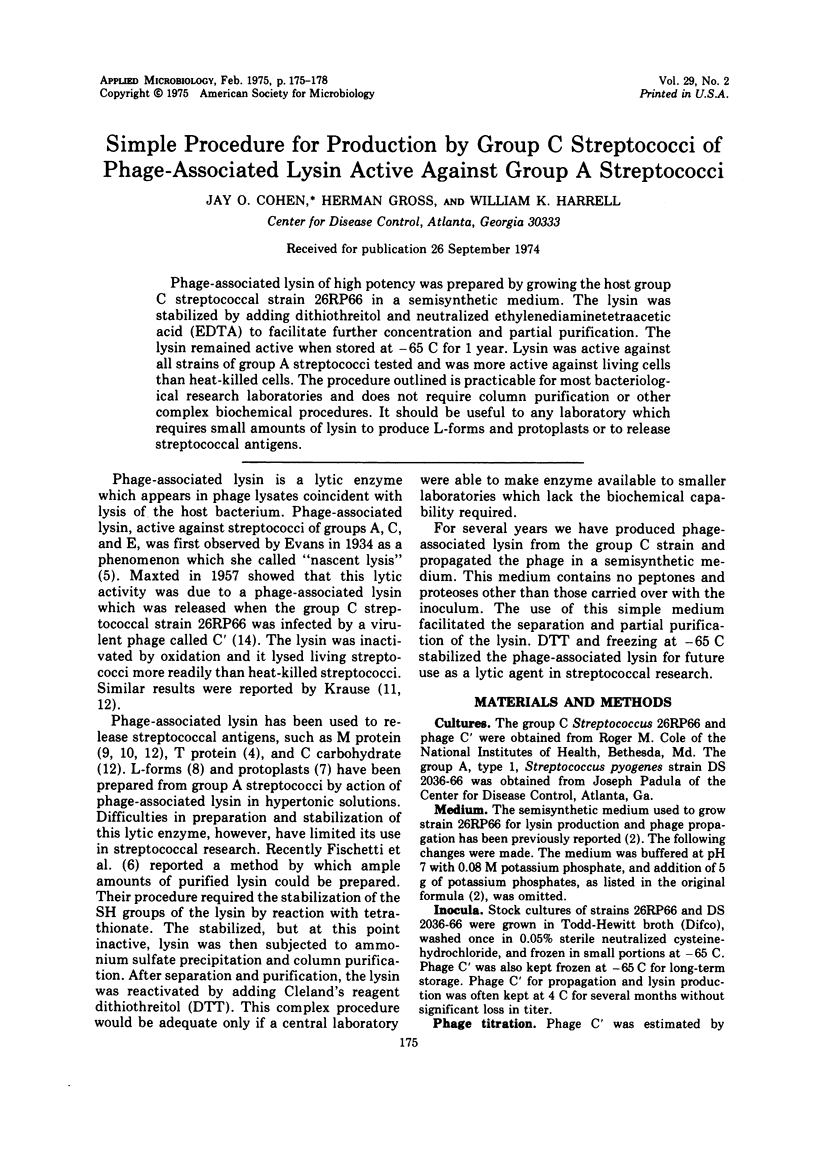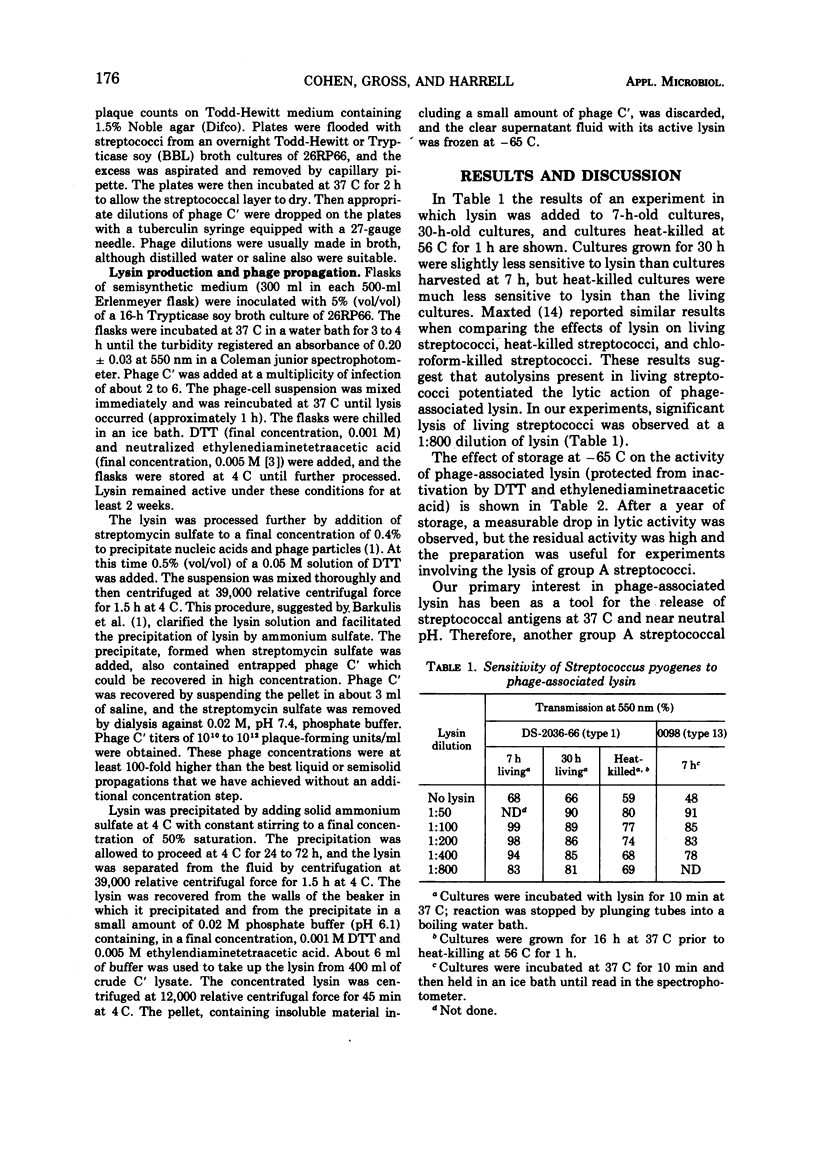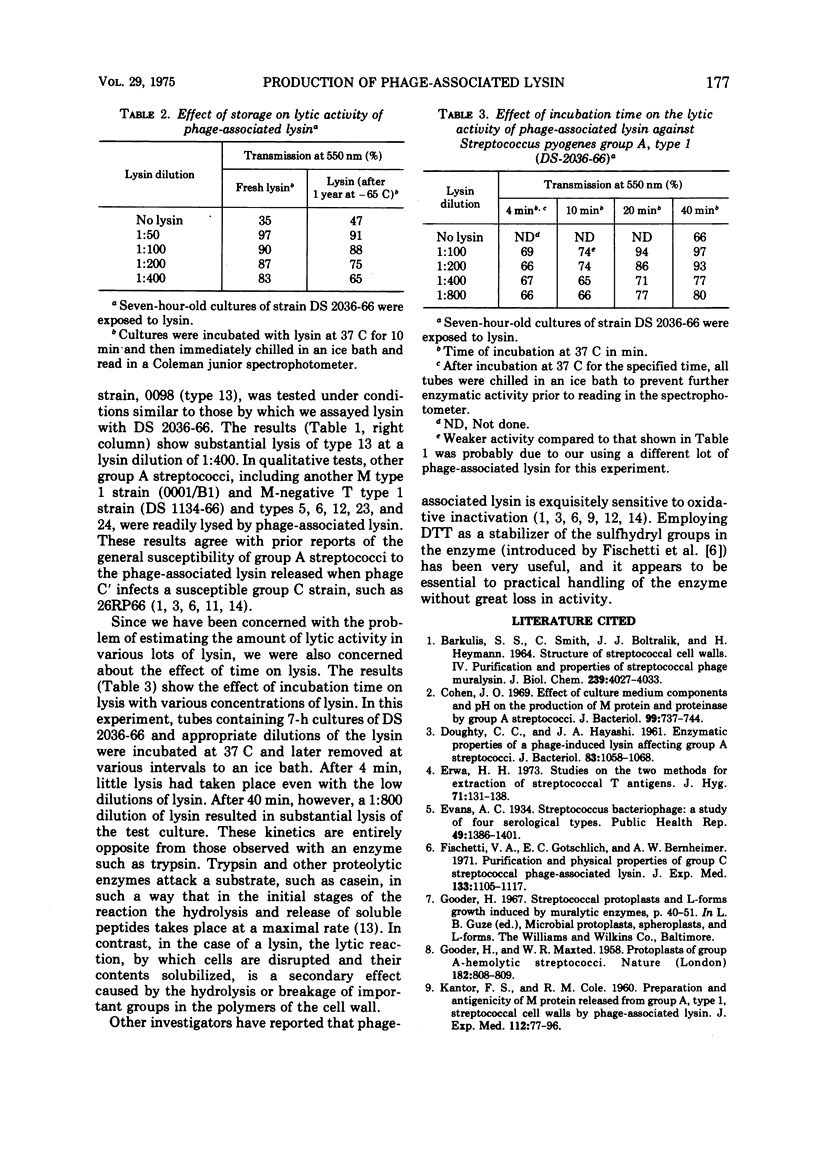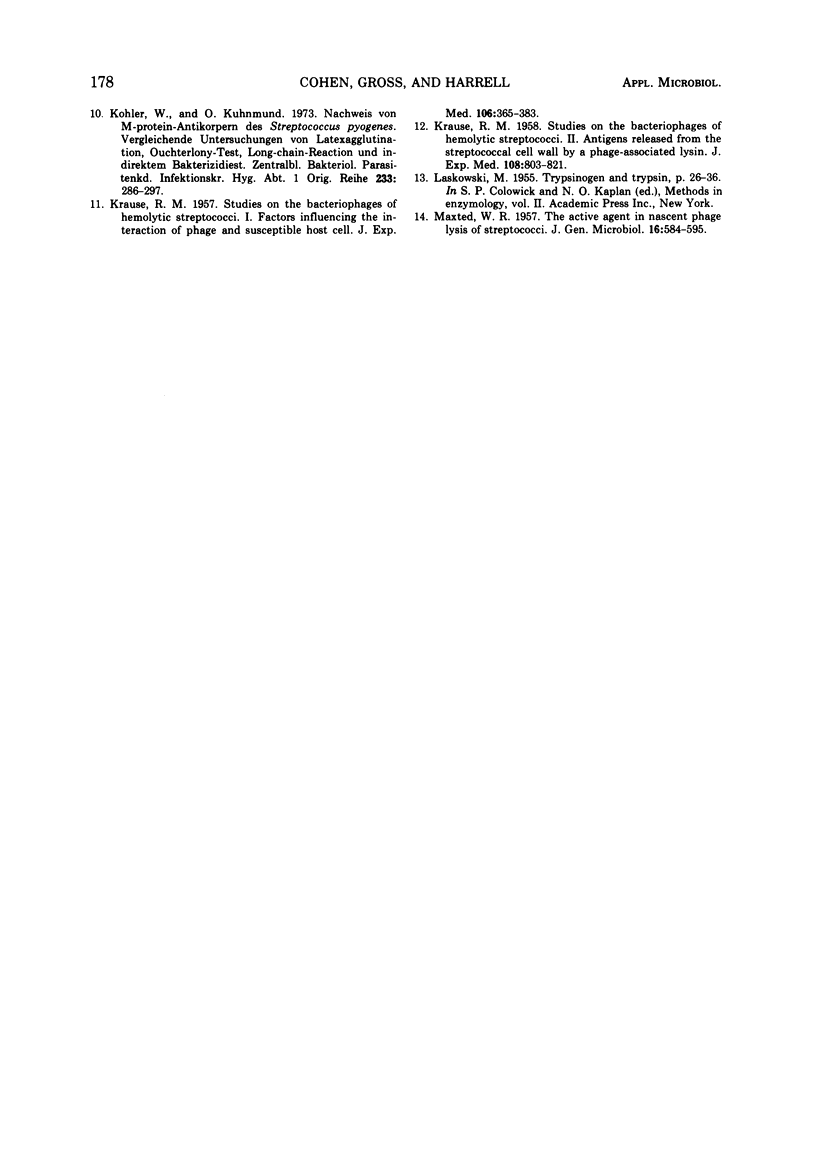Abstract
Phage-associated lysin of high potency was prepared by growing the host group C streptococcal strain 26RP66 in a semisynthetic medium. The lysin was stabilized by adding dithiothreitol and neutralized ethylenediaminetetraacetic acid (EDTA) to facilitate further concentration and partial purification. The lysin remained active when stored at -65 C for 1 year. Lysin was active against all strains of group A streptococci tested and was more active against living cells than heat-killed cells. The procedure outlined is practicable for most bacteriological research laboratories and does not require column purification or other complex biochemical procedures. It should be useful to any laboratory which requires small amounts of lysin to produce L-forms and protoplasts or to release streptococcal antigens.
Full text
PDF



Selected References
These references are in PubMed. This may not be the complete list of references from this article.
- BARKULIS S. S., SMITH C., BOLTRALIK J. J., HEYMANN H. STRUCTURE OF STREPTOCOCCAL CELL WALLS. IV. PURIFICATION AND PROPERTIES OF STREPTOCOCCAL PHAGE MURALYSIN. J Biol Chem. 1964 Dec;239:4027–4033. [PubMed] [Google Scholar]
- Cohen J. O. Effect of culture medium composition and pH on the production of M protein and proteinase by group A Streptococci. J Bacteriol. 1969 Sep;99(3):737–744. doi: 10.1128/jb.99.3.737-744.1969. [DOI] [PMC free article] [PubMed] [Google Scholar]
- DOUGHTY C. C., HAYASHI J. A. Enzymatic properties of a phage-induced lysin affecting group A streptococci. J Bacteriol. 1962 May;83:1058–1068. doi: 10.1128/jb.83.5.1058-1068.1962. [DOI] [PMC free article] [PubMed] [Google Scholar]
- Erwa H. H. Studies on two methods for extraction of streptococcal T antigens. J Hyg (Lond) 1973 Mar;71(1):131–138. doi: 10.1017/s0022172400046295. [DOI] [PMC free article] [PubMed] [Google Scholar]
- Fischetti V. A., Gotschlich E. C., Bernheimer A. W. Purification and physical properties of group C streptococcal phage-associated lysin. J Exp Med. 1971 May 1;133(5):1105–1117. doi: 10.1084/jem.133.5.1105. [DOI] [PMC free article] [PubMed] [Google Scholar]
- GOODER H., MAXTED W. R. Protoplasts of group A beta-haemolytic streptococci. Nature. 1958 Sep 20;182(4638):808–809. doi: 10.1038/182808b0. [DOI] [PubMed] [Google Scholar]
- KANTOR F. S., COLE R. M. Preparation and antigenicity of M protein released from group A, type 1 streptococcal cell walls by phage-associated lysin. J Exp Med. 1960 Jul 1;112:77–96. doi: 10.1084/jem.112.1.77. [DOI] [PMC free article] [PubMed] [Google Scholar]
- KRAUSE R. M. Studies on bacteriophages of hemolytic streptococci. I. Factors influencing the interaction of phage and susceptible host cell. J Exp Med. 1957 Sep 1;106(3):365–384. doi: 10.1084/jem.106.3.365. [DOI] [PMC free article] [PubMed] [Google Scholar]
- KRAUSE R. M. Studies on the bacteriophages of hemolytic streptococci. II. Antigens released from the streptococcal cell wall by a phage-associated lysin. J Exp Med. 1958 Dec 1;108(6):803–821. doi: 10.1084/jem.108.6.803. [DOI] [PMC free article] [PubMed] [Google Scholar]
- Köhler W., Kühnemund O. Nachweis von M-Protein-Antikörpern des Streptococcus pyogenes. Vergleichende Untersuchungen von Latexagglutination, Ouchterlong-Test, Long-chain-Reaktion und indirektem Bakterizidietest. Zentralbl Bakteriol Orig A. 1973 Mar;223(2):286–297. [PubMed] [Google Scholar]
- MAXTED W. R. The active agent in nascent phage lysis of streptococci. J Gen Microbiol. 1957 Jun;16(3):584–595. doi: 10.1099/00221287-16-3-584. [DOI] [PubMed] [Google Scholar]


